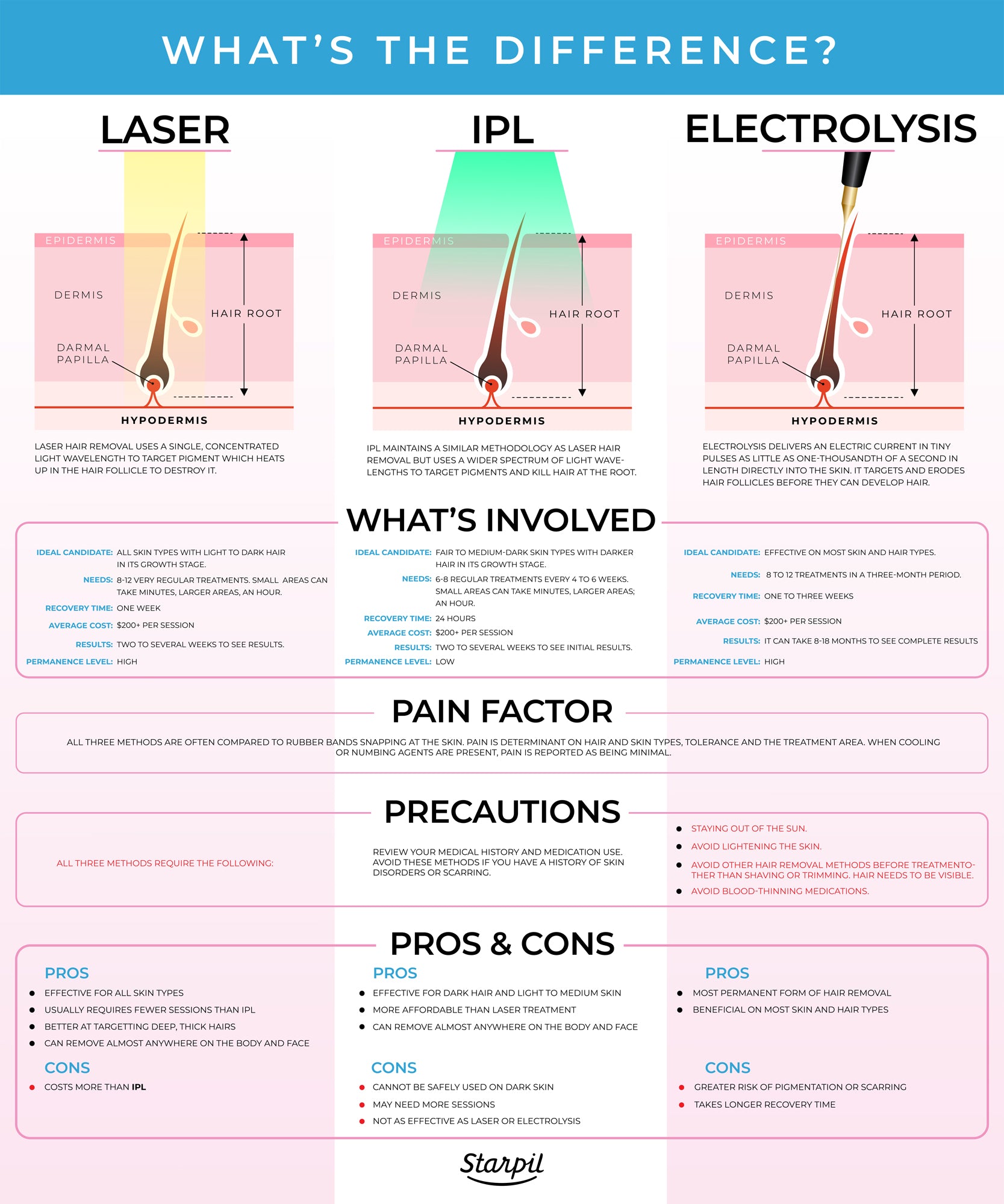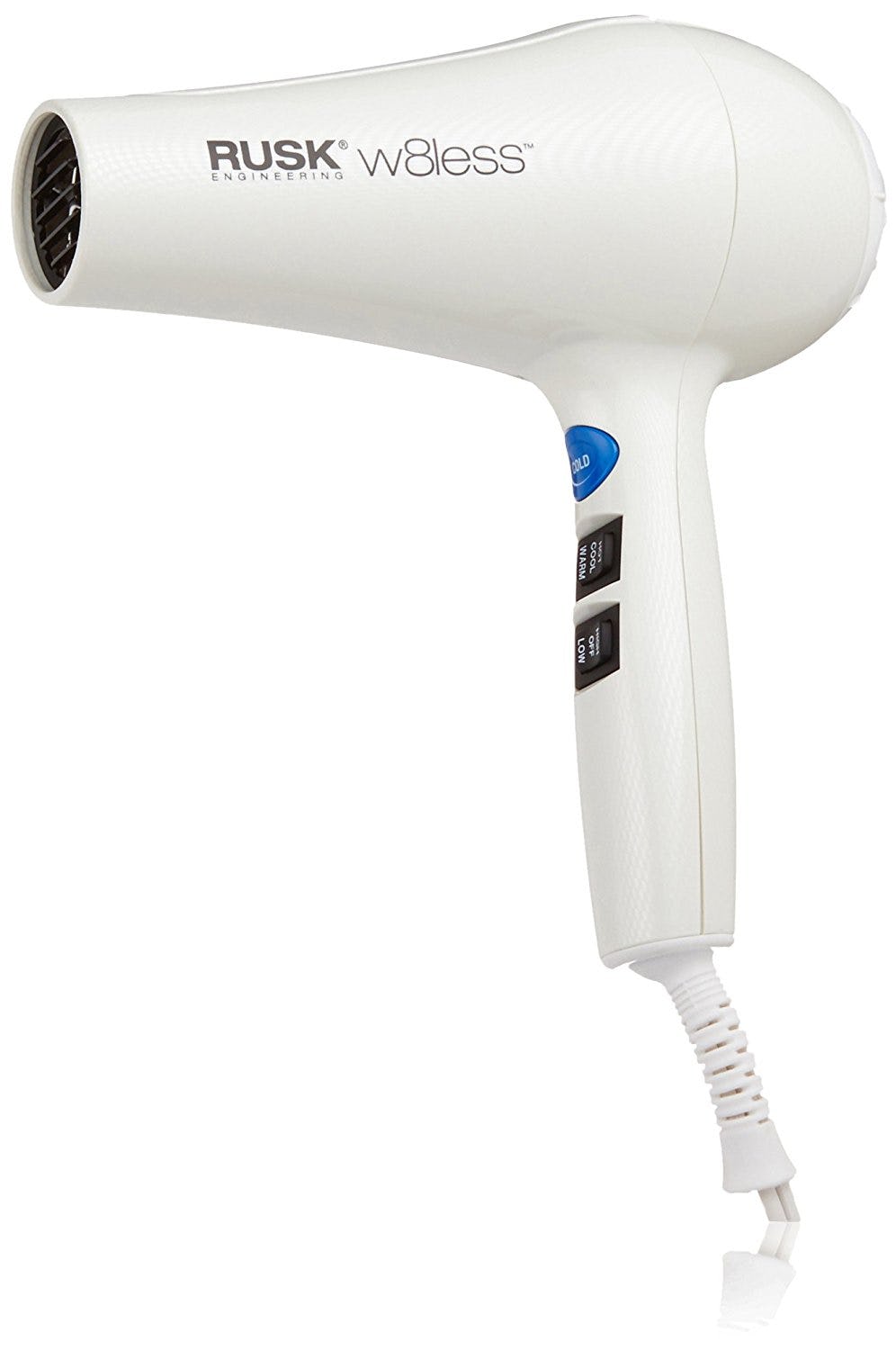Table Of Content
- How to Care For Skin After Electrolysis
- How do you choose a provider for electrolysis?
- Number of Treatment Sessions
- Your Best Skin Ever: Skin Care Treatments and Products
- Factors to Consider in the Total Cost of Electrolysis
- When is the best time to get electrolysis?
- What's the best hair type for electrolysis?

But it can also work well for targeted spots around the face or underarms. The duration of the treatment varies depending on the size of the area being treated and the amount of hair present. A significant drawback when it comes to electrolysis is that each session can be quite time-consuming.
How to Care For Skin After Electrolysis
Electrolysis works similarly on all skin types, since hair follicles are selected and treated by hand. Electrolysis is a hair removal technique that uses an epilator device to disrupt hair growth. During the procedure, a dermatologist or trained technician inserts a small probe into a patient’s hair follicle, destroying it with an electrical current. After the procedure, the existing hair will fall out — many sessions are needed to achieve hair removal.
How do you choose a provider for electrolysis?
Some people see small scabs on the surface of the skin, but they fall off naturally. It’s also common to see redness and swelling for a few hours after treatment.Patients report small amounts of pain during the process, too. Most people describe the feeling as a heat sensation followed by a pinch each time the needle attacks a new follicle.
Best facial hair removal products and treatments Waxing, threading, laser, dermaplaning - Harper's Bazaar UK
Best facial hair removal products and treatments Waxing, threading, laser, dermaplaning.
Posted: Mon, 30 Mar 2020 07:00:00 GMT [source]
Number of Treatment Sessions
Using a cool, damp compress can alleviate discomfort and decrease inflammation. Regan Kudlata is a licensed Family Nurse Practitioner and a Senior Cosmetic Laser Practitioner licensed by the Georgia Composite Medical Board. Regan has more than 20 years of laser experience in laser hair removal, tattoo removal, skin rejuvenation, treatment of veins and skin lesions, IPL and SculpSure at WIFH.
Each pulse of the laser takes a fraction of a second and can treat many hairs at the same time. The laser can treat an area approximately the size of a quarter every second. Small areas such as the upper lip can be treated in less than a minute, and large areas, such as the back or legs, may take up to an hour. No, you shouldn’t shave in between electrolysis appointments if you really want to see the results from electrolysis. You’ll walk away from your appointment hair-free, so depending on how fast your hair grows, you won’t see much regrowth for three to four weeks.
Factors to Consider in the Total Cost of Electrolysis
Every method of permanent hair removal will incur a slight bit of discomfort — but the keyword here is slight. Electrolysis is typically compared to a stinging or pricking sensation, which is understandable when you consider the fact that each hair follicle has to be poked by a probe. Unsterile probes inserted into the skin can be the cause of severe infection and scabbing.
When is the best time to get electrolysis?
Everything You Should Know About Hair Removal Treatments - Who What Wear
Everything You Should Know About Hair Removal Treatments.
Posted: Mon, 08 Jun 2020 07:00:00 GMT [source]
While there is no set number of hair follicles that can be treated with each pulse of light, Laser Hair Removal can cover a significant amount of skin in a much shorter treatment time. Likewise, a number of new types of laser continue to be introduced to the market. For instance, the GentleYAG© laser has been specifically crafted to improve hair removal results for patients with dark skin. When that electric current travels down to the hair follicle, it zaps it dead, preventing a hair from ever growing there again. The procedure is typically done by a licensed and trained electrologist.
Get answers to common questions about permanent hair removal:
People often compare it to a rubber band snapping on the skin, but others report it as more of a burning sensation. The FDA notes that some practitioners recommend using a skin-numbing product during treatment, but topical anesthetics come with their own risks and side effects. This may not be suitable for everyone, so it’s best to speak with a doctor before moving ahead with these. While it is not mandatory, some patients find taking ibuprofen an hour before the treatment can reduce the pain. If you are especially sensitive to pain, you can even apply a numbing solution to your skin ahead of time, just make sure to run it by the clinician first.
Hair removal can be an important part of transitioning for members of the trans and gender-expansive communities and can help with feelings of dysphoria or unease. Most people are candidates for laser hair removal — the procedure works best for patients who have dark hair. However, the laser can be adjusted to treat different skin and hair types, including some patients with blonde and red hair. However, individuals who want to remove very light blonde or gray hair are usually not laser hair removal candidates because their hair is too light for the laser to safely target.
According to Dr. Husain, it uses a thin metal probe to deliver a low-level electrical pulse to each undesired hair follicle and stops new hair growth. "This method is safe to target hair follicles near sensitive areas and is very precise," he notes. "After many repeated treatments, electrolysis results in permanent hair removal." In terms of ouch-factor, you can expect to feel some discomfort due to the brief pinch and heat sensations throughout the treatment. Are you thinking about a permanent solution to say goodbye to unwanted body hair? If yes, laser hair removal and electrolysis are the two effective methods to achieve the result.
"So, it will end up burning the skin. It is important that you wear SPF50 at all times." This is especially the case if you’re having the procedure done on a large area like your back, or on an area of thicker hair growth like the pubic region. Although at-home laser hair treatment might be appealing in terms of cost, it’s not proven to be safe or effective. You can minimize the risk of side effects and permanent skin damage by making sure you seek treatment from a board-certified dermatologist only.
Most patients have permanent hair loss after an average of three to seven sessions. With this numbing combo, Elise notes that some of her patients find electrolysis so tolerable that they can sit back and watch a movie. Which, hey, getting rid of all my hair and catching up on my Marvel marathon? Sounds good to me—and way better than waxing, which offers precisely zero numbing ahead of time. Anyone can get either procedure, but you should speak to a dermatologist first to make sure you’re a good candidate for treatment. You’ll also need to avoid touching or scratching the treated area in the days following treatment.
They happen every week or two, making it a much more time-consuming process. Your skin will also be more sensitive to sunlight after a laser hair removal session. "The cons include increased skin photosensitivity that requires those who have had this treatment to stay out of the sun for at least six weeks," MacLeman says. With laser hair removal, there aren't any probes entering your hair follicles (as with electrolysis), which could make it the better method for you if you’re needle-shy. Because so many sessions are required for electrolysis, prices run lower than laser hair removal.

While annual touch-ups are needed for laser hair removal, the procedure is much less time consuming than electrolysis. Your hair grows at different times, and treatment can only target the hair you have right now; it can’t prevent future hairs from popping up, which can happen over a longer timeframe than you might expect. You may need touch-up sessions over the years to catch errant hairs. As ever with weighing up two treatment options, there's no clear-cut victor in the battle of electrolysis vs laser hair removal. Electrolysis has the benefit of permanence and of working on a wider variety of skin tones and hair colors, but there's no denying laser is more popular and it will likely be easier to find a practitioner.
At-home laser hair removal does work, however, like a lot of things on social media, the reality may be different than how it appears. To help you protect your body and your wallet, we help you determine fact from fiction. Hmmm – that at-home laser hair removal device looks pretty nifty.

No comments:
Post a Comment